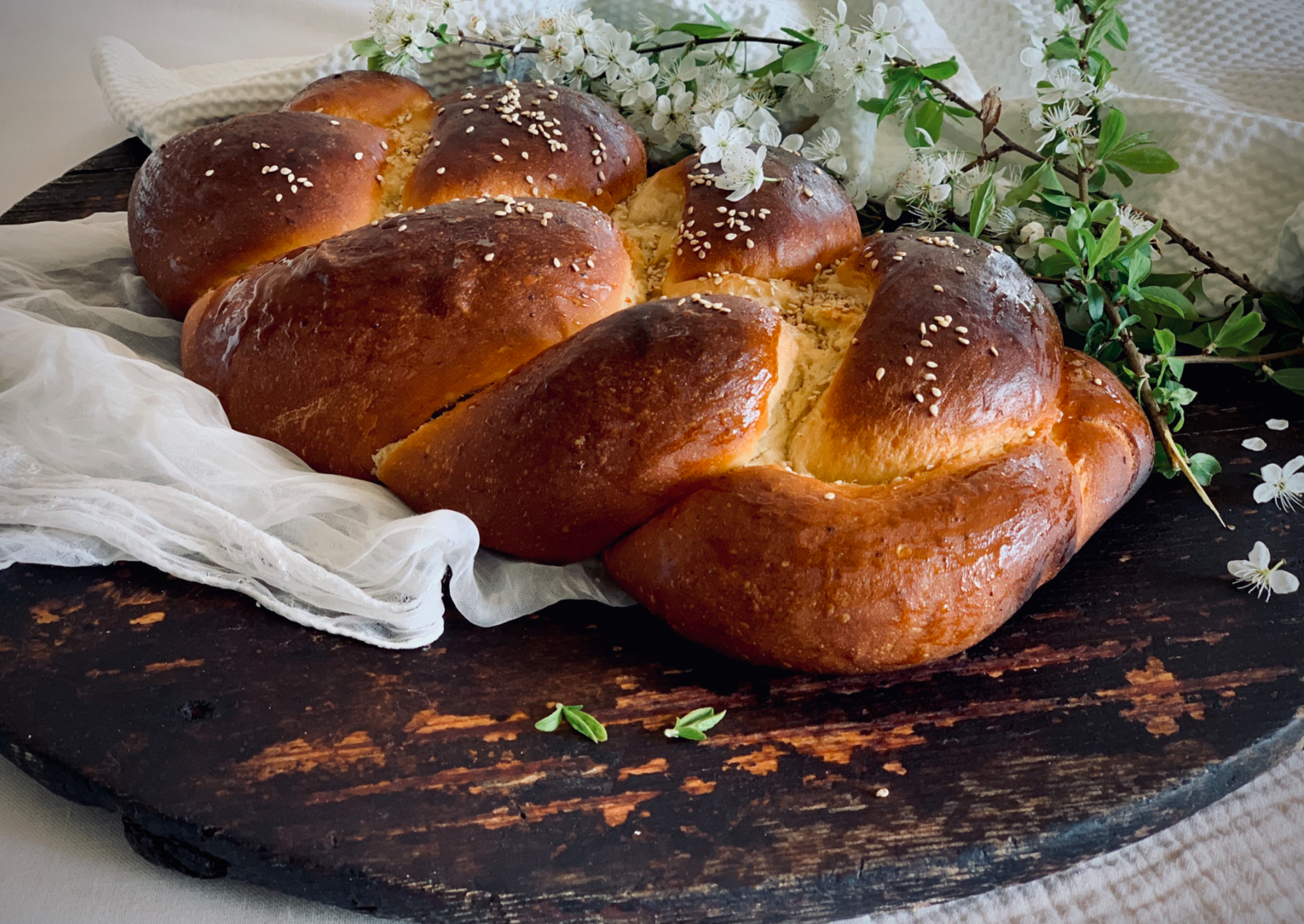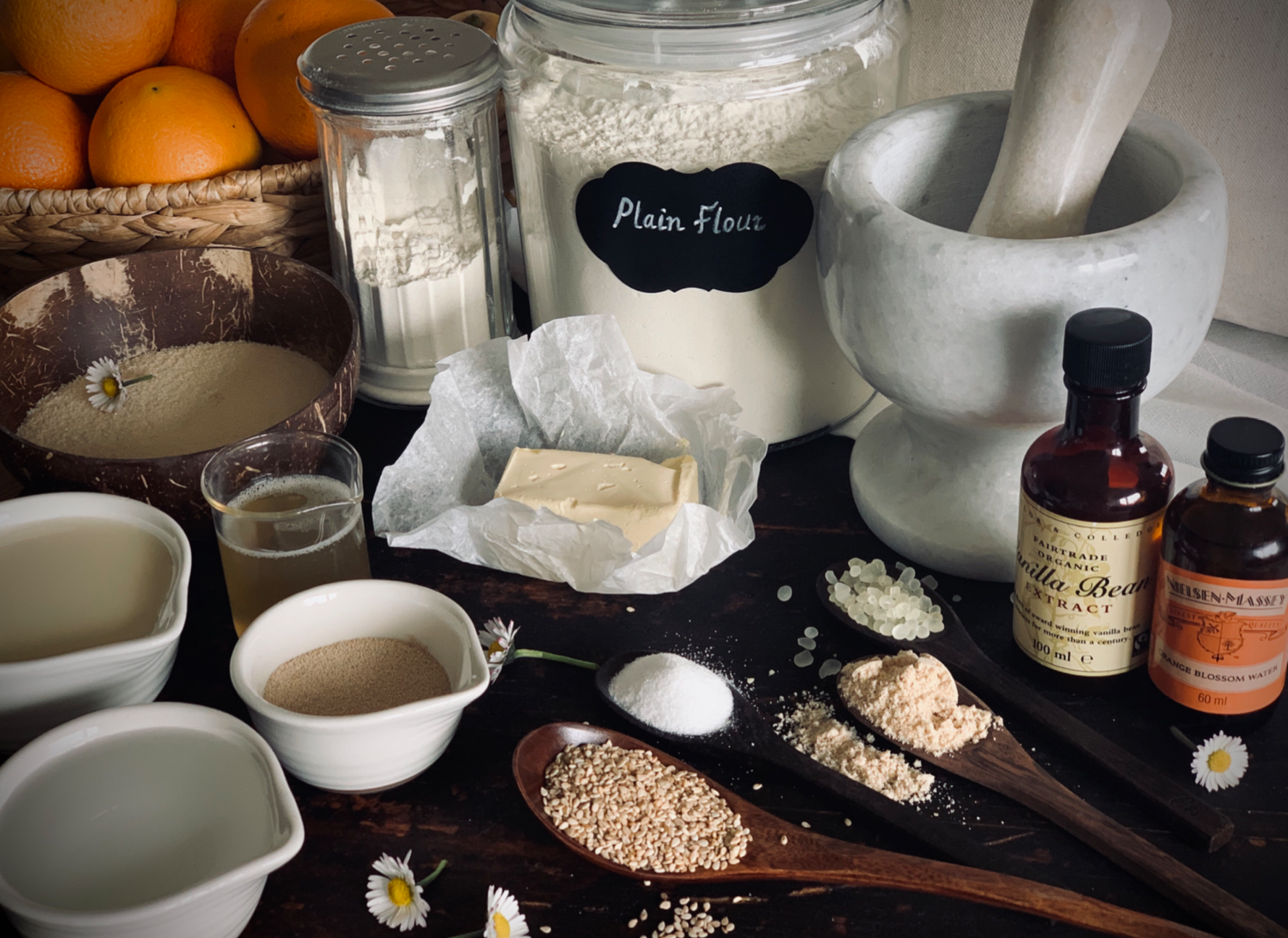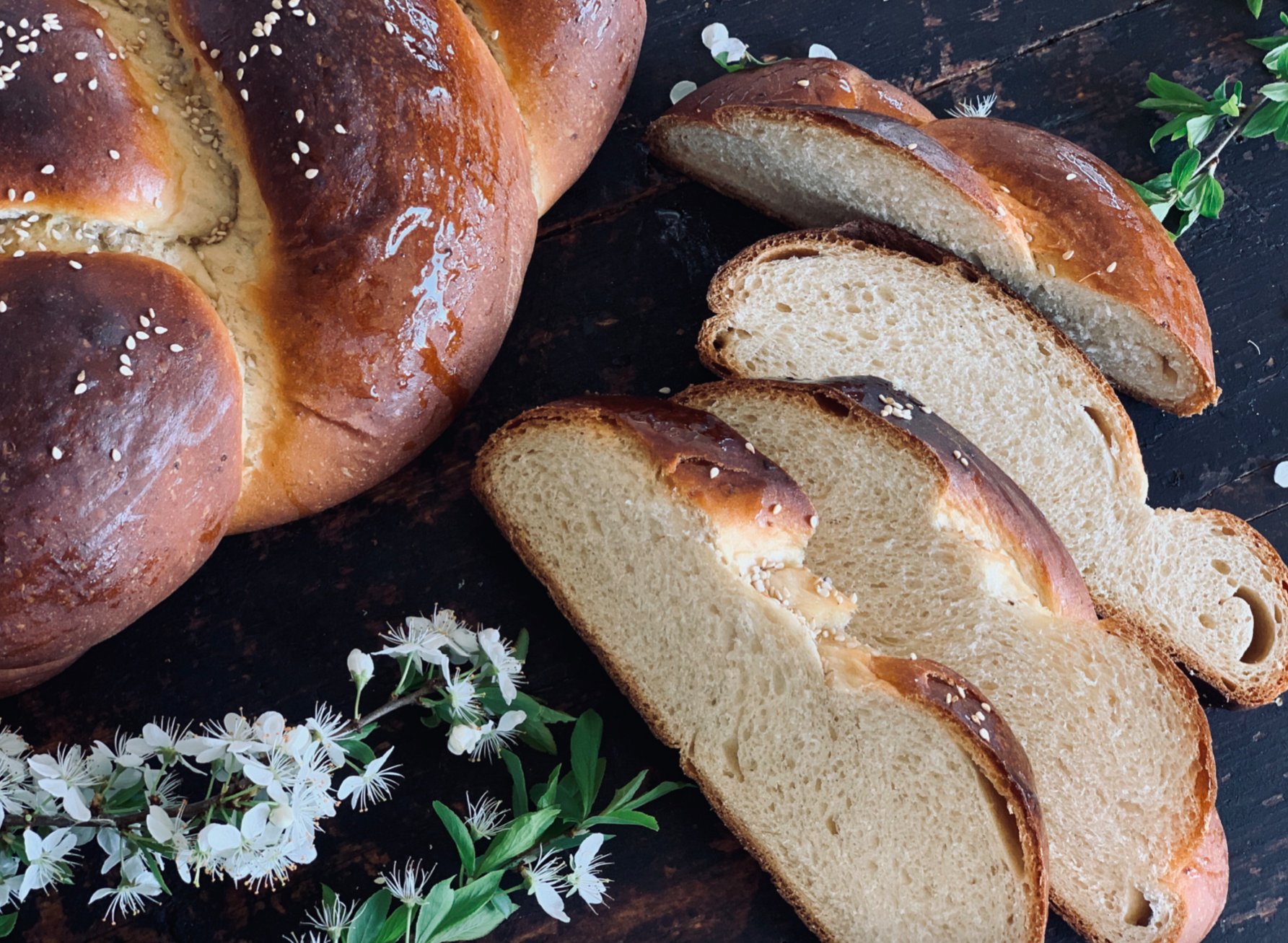Tsoureki, A Sweet Festive Bread



Tsoureki, A Sweet Festive Bread
Makes one loaf - vegan / dairy free
Tsoureki is a wonderful sweet festive bread, flavoured with mastic, mahlep and orange zest*. It is traditionally made during the Easter holiday in Greece, and other countries. For Christmas, it is shaped into a round braided loaf and enriched with whole almonds, sesame seeds, raisins, apricots or other dried fruit and nuts. The mastic and mahlep spices, give this beautiful bread a unique, delightful taste. Its texture is also quite original, a little like brioche, but softer and elastic. This recipe may require some time and patience, but the result is most certainly redeeming. It can be enjoyed simply as it is, or lightly toasted and buttered, or dipped in your favourite beverage.
Ingredients
- Dry -
480g plain flour
15g instant yeast
160g golden caster sugar
1tsp salt
1tsp mahleb powder
1tsp mastic tears, ground into powder
- Wet -
125ml unsweetened soy milk
80ml water
60g melted vegan butter
60ml aquafaba, lightly beaten
1tsp vanilla extract
1tsp orange blossom water
- For glazing -
2tbsp plant based milk
1tbsp maple syrup
1tbsp sesame seeds or slivered almonds
Method
In a large mixing bowl, combine all the dry ingredients.
In a small saucepan, melt the butter and add the milk and water. Gently warm the mixture, but do not bring to a boil. Stir in the lightly beaten aquafaba, the vanilla and the orange blossom water.
Pour the wet ingredients into the dry and begin mixing them together. You can do this in a stand up mixer, or by hand. Keep stirring, until the mixture comes together and forms a very sticky dough. It may take 5 to 10 minutes. Once the dough begins to come away from the sides of the bowl and gains some elasticity, turn it onto a well buttered work surface. A large cutting board or a clean worktop will work just fine. Resist the temptation to add more flour. This dough should be sticky and will remain so during the whole process. With the help of a dough scraper, continue to knead the dough for a few more minutes, by folding it onto itself over and over.
Form the dough in a ball and put in a large, clean and well buttered bowl. Cover it with a cloth and place it in a warm, draft free spot to proof. You may also place it in the oven, with just the light on. Because of the sugar content, it may take 3 to 4 hours for the dough to double in size. Be patient and give it all the time it may need.
Line a large baking tray with parchment paper and set it aside.
Once it has doubled in size, turn the dough onto a well buttered work surface. With the help of the dough scraper and scales, divide the dough into 3 equal parts. Take one part at a time and shape it into an oblong oval shape. Using a well buttered rolling pin, roll out the dough into a flat long strip, the longer the better. Starting from the wider side, now roll the flattened dough into a long snakelike shape. This process will make the bread fluffy and elastic. Place the rolled strip on the lined baking tray. Repeat with the other two parts and place all 3 parallel with each other on the lined tray.
Grease your hands with a little butter and carefully braid the 3 strips together. Tuck the ends underneath each side. Cover with a cloth and allow to proof once more, until it doubles in size. It may take another 2-3 hours. At this stage, if you like, you may also place the dough in the fridge over night. If you do that, the following morning, allow the dough to come to room temperature and rise a little more before baking. Alternatively, place it in the oven with the light on once more.
Preheat the oven at 180C. (If you have been proofing your bread in a lit oven, first remove it, then turn the oven on.) Place the dough into the centre of the oven and bake for 20 minutes. It will rise further and turn golden. In the meantime, prepare the glaze by mixing the milk and maple syrup together. After the 20 minutes, remove the tsoureki from the oven and brush it all over with the prepared glaze. Sprinkle the surface with sesame seeds or almond slivers and return to the oven. After 5 minutes, loosely cover it with parchment paper and continue to bake for a further 10 minutes.
Remove the tsoureki from the oven and allow it to cool covered with a cloth. Once cooled, wrap it well in a clean towel to keep it moist and soft.
Enjoy!
Notes
If you are planning to make this bread for a special occasion, i would suggest to prepare it the day before, proof it over night in the fridge and bake it the following morning. This way you will be more relaxed with time and have a perfectly fresh tsoureki on your special day.
*Because orange zest can be quite potent, we prefer to use orange blossom water over orange zest, because this way we achieve the beautiful floral scent, without overpowering the delicate mastic flavour.
Although tsoureki can be made without mastic and mahleb, it is these spices that make it stand out and lend it its stunning flavour. Both are available online, or in specialty stores.
- Mastic -
Mastic, or masticha, as it is called in Greece, is a resin extracted from the mastic tree. Traditionally produced on the island of Chios, it is also known as tears of Chios, because of its form in droplets, resembling tears. Mastic has been cultivated for more than 2,500 years.
It is often consumed as a supplement, in the form of chewing gum, powders, tinctures and capsules. Mastic can be used to relieve digestive issues, treat ulcer and ease symptoms of Inflammatory Bowel Disease. Studies have shown that its medicinal properties may also lower cholesterol, improve liver health, prevent prostate and colon cancer, treat symptoms of allergic asthma and prevent cavities.
In Greece, apart from baking, it is used to make a delicious digestive liqueur, to flavour ice cream, in various cosmetic products and more.
- Mahleb -
Mahleb, or mahlepi as it is called in Greece, is a spice obtained by the inner kernel of cherry stones. It is ground to a powder and used to enhance the taste of various baked goods, sweets and pastries. Its flavour is a cross between bitter almond and cherry and it may be used in a similar way to cinnamon and nutmeg.
